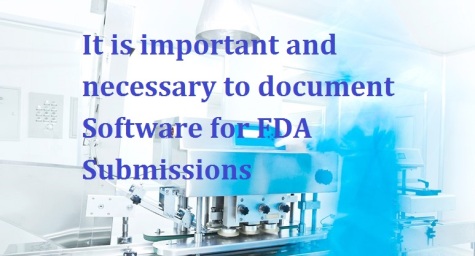 Software project management has an important tool in the Agile methodology. The Agile methodology developed as a product of the gradual efforts at arriving at a team based methodology of iterative software development. Because of its close association with software, in terms of suitability; Agile is to software development what Lean is to manufacturing. Among the many areas in which the Agile methodology is very well suitable and adaptable; healthcare is one, since it uses software heavily.
Software project management has an important tool in the Agile methodology. The Agile methodology developed as a product of the gradual efforts at arriving at a team based methodology of iterative software development. Because of its close association with software, in terms of suitability; Agile is to software development what Lean is to manufacturing. Among the many areas in which the Agile methodology is very well suitable and adaptable; healthcare is one, since it uses software heavily.
The Agile methodology is effective in helping software project managers anticipate and address major logjams of software project management, such as vulnerability and unpredictability. By preventing project delays; Agile helps to cut costs. Since flexibility is an important characteristic of Agile; it has the ability to accommodate and take in many new changes that take place as the project develops.
Another major benefit of Agile is that it prevents piling of work at later stages of the project by reviewing project progress at every stage by validating roles, steps and processes functions. This is absolutely useful in the backdrop of severe constraints of time and money, because of which it is highly preferred and rated by Project Managers.
Is Agile perfect?
All these terrific advantages notwithstanding; Agile is not perfect. It is not suited in every setting and in every situation. If Agile has to be efficient and deliver its results optimally; it has to work in conditions where there is complete, tightly knit team coordination. In the absence of very active and strong participation from the team leaders, subject matter experts and stakeholders; Agile can prove less than suitable or successful.
Agile’s suitability for the healthcare industry is well-established. However, Agile, being a highly teamwork-dependent initiative can fail to deliver in the absence of one or more situations in which it thrives. In the absence of complete confidence by those using it in the healthcare industry of its role in saving money, time and other resources; the Agile methodology can be less than useful
Get to learn the applicability of Agile methodology to healthcare
The ways by which the healthcare industry can adapt and optimize Agile methodology for its use and overcome the deficiencies and shortfalls of this methodology for enhanced performance will be the topic of a very interesting two-day seminar that is being organized by GlobalCompliancePanel, a leading provider of professional trainings for all the areas of reg...
The Director of this seminar is Brian Shoemaker, who consults for healthcare products companies on computer system validation, software quality assurance, and electronic records and signatures, and has worked with companies in Germany and Switzerland as well as the U.S. Please register for this session by logging on to It is important and necessary to document Software for FDA Submissions. This seminar has been pre-approved by RAPS as eligible for up to 12 credits towards a participant’s RAC recertification upon full completion.
Clarity on the suitability of Agile to IEC 62304
A criticism that does the rounds in healthcare software industry circles is that Agile, because of its lack of documentation, runs counter to the lifecycle standards mandated in IEC 62304. Brian will clarify on this area and explain how clear processes for quality management system, risk management process, software maintenance, configuration management, and problem resolution, which go into the IEC 62304 principles actually reinforce, rather than undermine the Agile methodology. The proof of this fact is that the AAMI Agile report (TIR 45) has stated that the proper application of Agile, with its emphasis on nimbleness and ongoing learning, into a quality system and safety risk management can blend with and expedite the fulfilment of regulatory expectations of well-documented development.
Contrary for popular belief, documentation in Agile actually helps in taking advantage of iterative development. How? Since the IEC 62304 does not specify any lifecycle model; documentation can grow out of the required iterative activities. Agile, by developing incrementally and preventing last minute anxieties and worries; is highly useful in many disciplines of healthcare such as hazard analysis. When risk management is included in iteration tasks; it becomes more robust and solid.
It is because of all these reasons that this is a session that professionals across a wide spectrum of positions such as Regulatory Specialists, Quality Assurance Specialists, Documentation Specialists, Test Managers, Software Team Leaders and Lead Developers, and Project and Program Managers ought not to miss out on.
They will get thoroughly familiarized on the applicability of the Agile methodology to software documentation for FDA submissions. Over these two days of this seminar, Brian will cover the following areas:
- Agile vs IEC 62304: an apparent contradiction?
- The role and value of documentation
- The REAL regulatory requirements
- Specific documents required for an FDA submission
- Areas where most development processes bog down
- Iteration – well suited for risk, usability, and design reviews
- Key practices to bridge the Agile and regulated worlds
- Agile is not only acceptable for medical device software, but can be clearly superior.



You need to be a member of MedTech I.Q. to add comments!
Join MedTech I.Q.